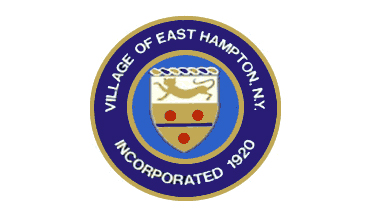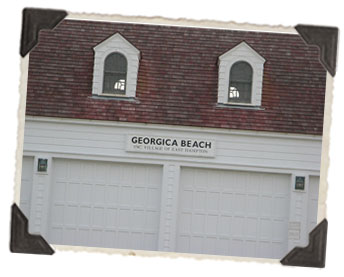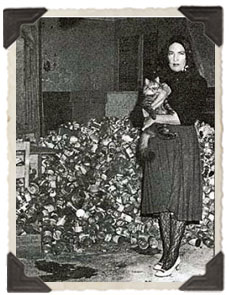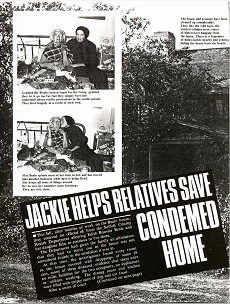The Village of East Hampton
 Once named the “Most Beautiful Village in America” by National Geographic Magazine, East Hampton is the epicenter of money and power in the Hamptons. It is located in Suffolk County, New York on the South Shore of Long Island. The Village of East Hampton is a separate municipality within the Town of East Hampton (which includes everything from Wainscott to Montauk).
Once named the “Most Beautiful Village in America” by National Geographic Magazine, East Hampton is the epicenter of money and power in the Hamptons. It is located in Suffolk County, New York on the South Shore of Long Island. The Village of East Hampton is a separate municipality within the Town of East Hampton (which includes everything from Wainscott to Montauk).
East Hampton was originally called Maidstone after Maidstone, Kent (England). The name was later changed to Easthampton (one word) reflecting the geographic names of its sister former Connecticut neighbors of Southampton and Westhampton. It would then become two separate words after the East Hampton Star newspaper began using the two-word name when it started publishing in 1885. The name “Maidstone” still frequently appears on place names throughout the town including the Maidstone Golf Club, where the young Little Edie Beale socialized and was known as “The Body Beautiful Beale.”
 East Hampton was founded in 1648 by a group of fishermen and farmers who came across Long Island Sound from Connecticut and Massachusetts. It was a quiet farming community until the beginning of the 20th Century when the village began to attract wealthy families seeking refuge from the hustle and bustle of New York City. It quickly became the summer getaway of choice for New York’s business, media, and entertainment heavyweights. Today, wineries have replaced most of the farms, and restrictive fishing laws have hampered the fish trade. The village is now a resort paradise replete with some of the whitest beaches on earth, five-star restaurants, exciting parties, luxury shopping, and fine antique stores. To some extent East Hampton has become less of a destination than a state of mind.
East Hampton was founded in 1648 by a group of fishermen and farmers who came across Long Island Sound from Connecticut and Massachusetts. It was a quiet farming community until the beginning of the 20th Century when the village began to attract wealthy families seeking refuge from the hustle and bustle of New York City. It quickly became the summer getaway of choice for New York’s business, media, and entertainment heavyweights. Today, wineries have replaced most of the farms, and restrictive fishing laws have hampered the fish trade. The village is now a resort paradise replete with some of the whitest beaches on earth, five-star restaurants, exciting parties, luxury shopping, and fine antique stores. To some extent East Hampton has become less of a destination than a state of mind.
 The quirky charm of East Hampton is probably what attracted Edith Beale to Grey Gardens. The area was home to many of the artists and writers to whom she loved to surround herself. Some artists even claim that East Hampton has a special kind of light, possibly created by unique atmospheric conditions caused by the close proximity of woods to the ocean, giving it a glistening presence that enhances the quality and output of their work.
The quirky charm of East Hampton is probably what attracted Edith Beale to Grey Gardens. The area was home to many of the artists and writers to whom she loved to surround herself. Some artists even claim that East Hampton has a special kind of light, possibly created by unique atmospheric conditions caused by the close proximity of woods to the ocean, giving it a glistening presence that enhances the quality and output of their work.
The government of East Hampton, called the “Village Board,” is known for its strict enforcement of the provisions of the municipal code, which includes taxes, planning and zoning, and general compliance of all ordinances. Understandably, the Board is intent on adhering to a strict preservationist policy in order to maintain the picturesque, small town character of the community. As you might imagine, Grey Gardens stuck out like a sore thumb when Edith Beale’s money began to run out and the house deteriorated behind thickets and vines.
 In October of 1971, after numerous complaints from neighbors, The Suffolk County Department of Health declared Grey Gardens unfit for human habitation. Inspectors found the two Beale women living in deplorable conditions; the home practically violated every building and health code on the books: rooms were covered with cat and raccoon feces, there were no working toilet facilities, no working appliances or utilities (the only running water tap was in the kitchen sink), mounds of empty pet food cans and other debris piled four feet high and running 15 feet long in the dining room, upholstery infested with fleas, shattered windows, and a tree growing through the ceiling of Big Edie’s original bedroom. Everything, including Big Edie’s magnificent grand piano, had been left to rot. The Beales prepared their food on a small sterno stove in the bedroom.
In October of 1971, after numerous complaints from neighbors, The Suffolk County Department of Health declared Grey Gardens unfit for human habitation. Inspectors found the two Beale women living in deplorable conditions; the home practically violated every building and health code on the books: rooms were covered with cat and raccoon feces, there were no working toilet facilities, no working appliances or utilities (the only running water tap was in the kitchen sink), mounds of empty pet food cans and other debris piled four feet high and running 15 feet long in the dining room, upholstery infested with fleas, shattered windows, and a tree growing through the ceiling of Big Edie’s original bedroom. Everything, including Big Edie’s magnificent grand piano, had been left to rot. The Beales prepared their food on a small sterno stove in the bedroom.
“One second-floor bedroom contained human feces. Conditions were the most horrible I have ever seen,” said Sidney Beckwith, head of Housing and Sanitation for the Health Department.
The Village of East Hampton wanted the Beales to clean house or move out. Little Edie called it a plot to get her mother’s jewelry and other valuables. Little Edie appealed to her cousin Jackie Onassis for help, but nothing happened. Mrs. Beale’s sons also refused to help, hoping to convince their mother and sister to move somewhere else like Florida. However, the Beale women defied all warnings and refused to leave the property under any threats.
 The press soon publicized the plight of the women. The story appeared in many of the most read newspapers and magazines at the time including The Enquirer, TV Radio Mirror, and Movieland. In May of 1972, fearing further bad publicity, Jackie decided to give the Beales a personal visit at Grey Gardens. Jackie hired a lawyer to represent the Beales in the eviction hearings. She and her sister, Lee Radziwill, agreed to pay for the repairs to bring the home up to code. All the trash was removed from the home (reportedly it took over 1,000 garbage bags!), a new roof and ceiling was added, the heating system was restored, the water was running again in all of the bathrooms and sinks, and all the rooms were freshly painted and plastered. The kitchen featured brand new appliances. Big Edie even remarked that the new refrigerator “makes ice cubes, you know. Isn’t it marvelous?” The renovations were reported to have cost in excess of $4,000.
The press soon publicized the plight of the women. The story appeared in many of the most read newspapers and magazines at the time including The Enquirer, TV Radio Mirror, and Movieland. In May of 1972, fearing further bad publicity, Jackie decided to give the Beales a personal visit at Grey Gardens. Jackie hired a lawyer to represent the Beales in the eviction hearings. She and her sister, Lee Radziwill, agreed to pay for the repairs to bring the home up to code. All the trash was removed from the home (reportedly it took over 1,000 garbage bags!), a new roof and ceiling was added, the heating system was restored, the water was running again in all of the bathrooms and sinks, and all the rooms were freshly painted and plastered. The kitchen featured brand new appliances. Big Edie even remarked that the new refrigerator “makes ice cubes, you know. Isn’t it marvelous?” The renovations were reported to have cost in excess of $4,000.
As witnessed in the Maysles documentary, the house soon reverted back to its former squalor.

